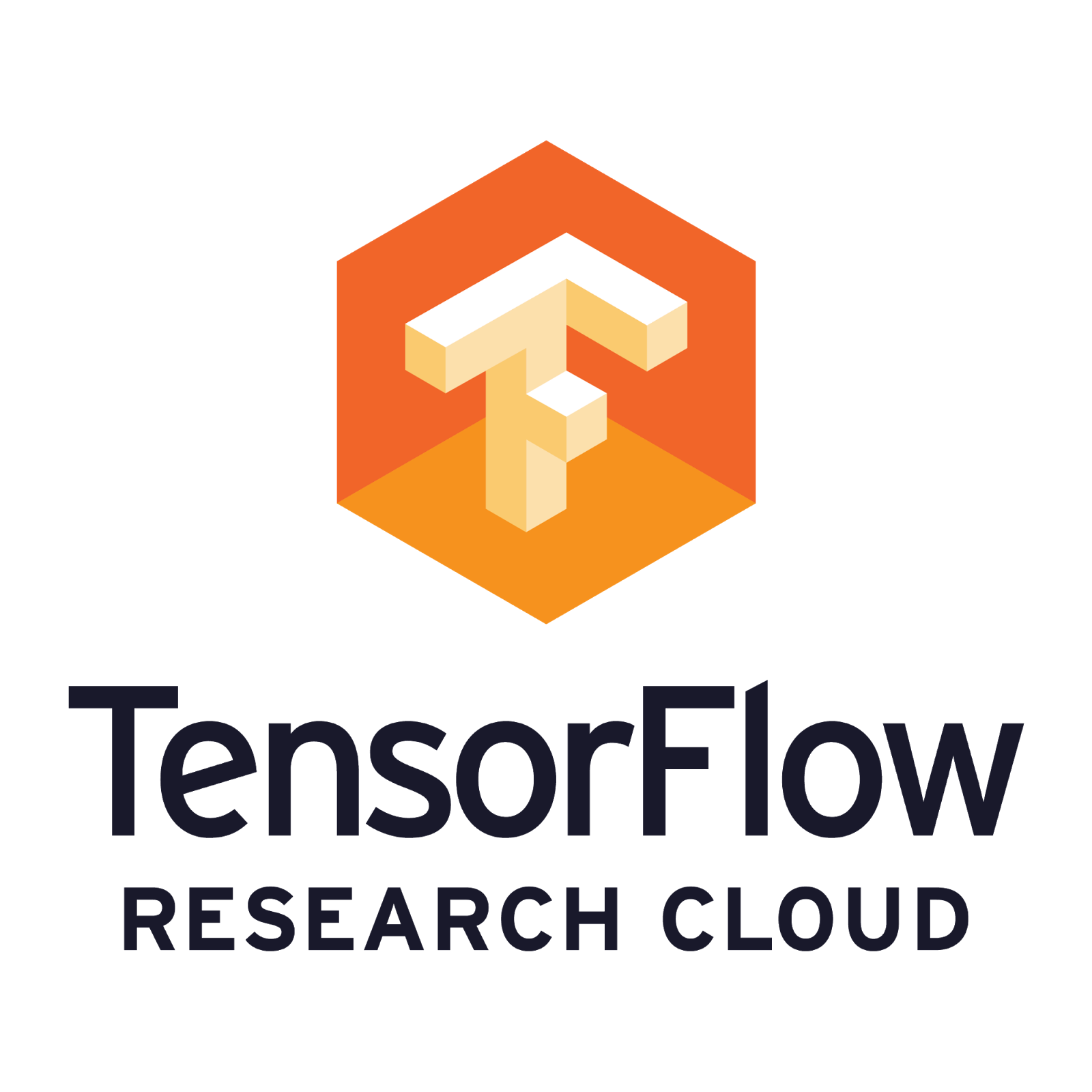ProtTrans
ProtTrans is providing state of the art pre-trained models for proteins. ProtTrans was trained on thousands of GPUs from Summit and hundreds of Google TPUs using various Transformer models.
Have a look at our paper ProtTrans: cracking the language of life’s code through self-supervised deep learning and high performance computing for more information about our work.

This repository will be updated regulary with new pre-trained models for proteins as part of supporting bioinformatics community in general, and Covid-19 research specifically through our Accelerate SARS-CoV-2 research with transfer learning using pre-trained language modeling models project.
Table of Contents
- ⌛️ News
- 🚀 Installation
- 🚀 Quick Start
- ⌛️ Models Availability
- ⌛️ Dataset Availability
- 🚀 Usage
- 📊 Original downstream Predictions
- 📊 Followup use-cases
- 📊 Comparisons to other tools
- ❤️ Community and Contributions
- 📫 Have a question?
- 🤝 Found a bug?
- ✅ Requirements
- 🤵 Team
- 💰 Sponsors
- 📘 License
- ✏️ Citation
⌛️ News
- 2023/07/14: FineTuning with LoRA provides a notebooks on how to fine-tune ProtT5 on both, per-residue and per-protein tasks, using Low-Rank Adaptation (LoRA) for efficient finetuning (thanks @0syrys !).
- 2022/11/18: Availability: LambdaPP offers a simple web-service to access ProtT5-based predictions and UniProt now offers to download pre-computed ProtT5 embeddings for a subset of selected organisms.
🚀 Installation
All our models are available via huggingface/transformers:
pip install torch
pip install transformers
pip install sentencepieceFor more details, please follow the instructions for transformers installations.
A recently introduced change in the T5-tokenizer results in UnboundLocalError: cannot access local variable 'sentencepiece_model_pb2 and can either be fixed by installing this PR or by manually installing:
pip install protobufIf you are using a transformer version after this PR, you will see this warning.
Explicitly setting legacy=True will result in expected behavor and will avoid the warning. You can also safely ignore the warning as legacy=True is the default.
🚀 Quick Start
Example for how to derive embeddings from our best-performing protein language model, ProtT5-XL-U50 (aka ProtT5); also available as colab:
from transformers import T5Tokenizer, T5EncoderModel
import torch
import re
device = torch.device('cuda:0' if torch.cuda.is_available() else 'cpu')
# Load the tokenizer
tokenizer = T5Tokenizer.from_pretrained('Rostlab/prot_t5_xl_half_uniref50-enc', do_lower_case=False)
# Load the model
model = T5EncoderModel.from_pretrained("Rostlab/prot_t5_xl_half_uniref50-enc").to(device)
# only GPUs support half-precision currently; if you want to run on CPU use full-precision (not recommended, much slower)
model.to(torch.float32) if device==torch.device("cpu")
# prepare your protein sequences as a list
sequence_examples = ["PRTEINO", "SEQWENCE"]
# replace all rare/ambiguous amino acids by X and introduce white-space between all amino acids
sequence_examples = [" ".join(list(re.sub(r"[UZOB]", "X", sequence))) for sequence in sequence_examples]
# tokenize sequences and pad up to the longest sequence in the batch
ids = tokenizer(sequence_examples, add_special_tokens=True, padding="longest")
input_ids = torch.tensor(ids['input_ids']).to(device)
attention_mask = torch.tensor(ids['attention_mask']).to(device)
# generate embeddings
with torch.no_grad():
embedding_repr = model(input_ids=input_ids, attention_mask=attention_mask)
# extract residue embeddings for the first ([0,:]) sequence in the batch and remove padded & special tokens ([0,:7])
emb_0 = embedding_repr.last_hidden_state[0,:7] # shape (7 x 1024)
# same for the second ([1,:]) sequence but taking into account different sequence lengths ([1,:8])
emb_1 = embedding_repr.last_hidden_state[1,:8] # shape (8 x 1024)
# if you want to derive a single representation (per-protein embedding) for the whole protein
emb_0_per_protein = emb_0.mean(dim=0) # shape (1024)We also have a script which simplifies deriving per-residue and per-protein embeddings from ProtT5 for a given FASTA file:
python prott5_embedder.py --input sequences/some.fasta --output embeddings/residue_embeddings.h5
python prott5_embedder.py --input sequences/some.fasta --output embeddings/protein_embeddings.h5 --per_protein 1⌛️ Models Availability
| Model | Hugging Face | Zenodo | Colab |
|---|---|---|---|
| ProtT5-XL-UniRef50 (also ProtT5-XL-U50) | Download | Download | Colab |
| ProtT5-XL-BFD | Download | Download | |
| ProtT5-XXL-UniRef50 | Download | Download | |
| ProtT5-XXL-BFD | Download | Download | |
| ProtBert-BFD | Download | Download | |
| ProtBert | Download | Download | |
| ProtAlbert | Download | Download | |
| ProtXLNet | Download | Download | |
| ProtElectra-Generator-BFD | Download | Download | |
| ProtElectra-Discriminator-BFD | Download | Download |
⌛️ Datasets Availability
| Dataset | Dropbox |
|---|---|
| NEW364 | Download |
| Netsurfp2 | Download |
| CASP12 | Download |
| CB513 | Download |
| TS115 | Download |
| DeepLoc Train | Download |
| DeepLoc Test | Download |
🚀 Usage
How to use ProtTrans:
- 🧬 Feature Extraction (FE):
Please check: Embedding Section. Colab example for feature extraction via ProtT5-XL-U50
- 🚀 Logits Extraction:
For ProtT5-logits extraction, please check: VESPA logits script.
- 💥 Fine Tuning (FT):
Please check: Fine Tuning Section. More information coming soon.
- 🧠 Prediction:
Please check: Prediction Section. Colab example for secondary structure prediction via ProtT5-XL-U50 and Colab example for subcellular localization prediction as well as differentiation between membrane-bound and water-soluble proteins via ProtT5-XL-U50.
- ⚗️ Protein Sequences Generation:
Please check: Generate Section. More information coming soon.
- 🧐 Visualization:
Please check: Visualization Section. More information coming soon.
- 📈 Benchmark:
Please check: Benchmark Section. More information coming soon.
📊 Original downstream Predictions
- 🧬 Secondary Structure Prediction (Q3):
| Model | CASP12 | TS115 | CB513 |
|---|---|---|---|
| ProtT5-XL-UniRef50 | 81 | 87 | 86 |
| ProtT5-XL-BFD | 77 | 85 | 84 |
| ProtT5-XXL-UniRef50 | 79 | 86 | 85 |
| ProtT5-XXL-BFD | 78 | 85 | 83 |
| ProtBert-BFD | 76 | 84 | 83 |
| ProtBert | 75 | 83 | 81 |
| ProtAlbert | 74 | 82 | 79 |
| ProtXLNet | 73 | 81 | 78 |
| ProtElectra-Generator | 73 | 78 | 76 |
| ProtElectra-Discriminator | 74 | 81 | 79 |
| ProtTXL | 71 | 76 | 74 |
| ProtTXL-BFD | 72 | 75 | 77 |
🆕 Predict your sequence live on predictprotein.org.
- 🧬 Secondary Structure Prediction (Q8):
| Model | CASP12 | TS115 | CB513 |
|---|---|---|---|
| ProtT5-XL-UniRef50 | 70 | 77 | 74 |
| ProtT5-XL-BFD | 66 | 74 | 71 |
| ProtT5-XXL-UniRef50 | 68 | 75 | 72 |
| ProtT5-XXL-BFD | 66 | 73 | 70 |
| ProtBert-BFD | 65 | 73 | 70 |
| ProtBert | 63 | 72 | 66 |
| ProtAlbert | 62 | 70 | 65 |
| ProtXLNet | 62 | 69 | 63 |
| ProtElectra-Generator | 60 | 66 | 61 |
| ProtElectra-Discriminator | 62 | 69 | 65 |
| ProtTXL | 59 | 64 | 59 |
| ProtTXL-BFD | 60 | 65 | 60 |
🆕 Predict your sequence live on predictprotein.org.
- 🧬 Membrane-bound vs Water-soluble (Q2):
| Model | DeepLoc |
|---|---|
| ProtT5-XL-UniRef50 | 91 |
| ProtT5-XL-BFD | 91 |
| ProtT5-XXL-UniRef50 | 89 |
| ProtT5-XXL-BFD | 90 |
| ProtBert-BFD | 89 |
| ProtBert | 89 |
| ProtAlbert | 88 |
| ProtXLNet | 87 |
| ProtElectra-Generator | 85 |
| ProtElectra-Discriminator | 86 |
| ProtTXL | 85 |
| ProtTXL-BFD | 86 |
- 🧬 Subcellular Localization (Q10):
| Model | DeepLoc |
|---|---|
| ProtT5-XL-UniRef50 | 81 |
| ProtT5-XL-BFD | 77 |
| ProtT5-XXL-UniRef50 | 79 |
| ProtT5-XXL-BFD | 77 |
| ProtBert-BFD | 74 |
| ProtBert | 74 |
| ProtAlbert | 74 |
| ProtXLNet | 68 |
| ProtElectra-Generator | 59 |
| ProtElectra-Discriminator | 70 |
| ProtTXL | 66 |
| ProtTXL-BFD | 65 |
📊 Use-cases
| Level | Type | Tool | Task | Manuscript | Webserver |
|---|---|---|---|---|---|
| Protein | Function | Light Attention | Subcellular localization | Light attention predicts protein location from the language of life | (Web-server) |
| Residue | Function | bindEmbed21 | Binding Residues | Protein embeddings and deep learning predict binding residues for various ligand classes | (Coming soon) |
| Residue | Function | VESPA | Conservation & effect of Single Amino Acid Variants (SAVs) | Embeddings from protein language models predict conservation and variant effects | (coming soon) |
| Protein | Structure | ProtTucker | Protein 3D structure similarity prediction | Contrastive learning on protein embeddings enlightens midnight zone at lightning speed | |
| Residue | Structure | ProtT5dst | Protein 3D structure prediction | Protein language model embeddings for fast, accurate, alignment-free protein structure prediction |
📊 Comparison to other protein language models (pLMs)
While developing the use-cases, we compared ProtTrans models to other protein language models, for instance the ESM models. To focus on the effect of changing input representaitons, the following comparisons use the same architectures on top on different embedding inputs.
| Task/Model | ProtBERT-BFD | ProtT5-XL-U50 | ESM-1b | ESM-1v | Metric | Reference |
|---|---|---|---|---|---|---|
| Subcell. loc. (setDeepLoc) | 80 | 86 | 83 | - | Accuracy | Light-attention |
| Subcell. loc. (setHard) | 58 | 65 | 62 | - | Accuracy | Light-attention |
| Conservation (ConSurf-DB) | 0.540 | 0.596 | 0.563 | - | MCC | ConsEmb |
| Variant effect (DMS-data) | - | 0.53 | - | 0.49 | Spearman (Mean) | VESPA |
| Variant effect (DMS-data) | - | 0.53 | - | 0.53 | Spearman (Median) | VESPA |
| CATH superfamily (unsup.) | 18 | 64 | 57 | - | Accuracy | ProtTucker |
| CATH superfamily (sup.) | 39 | 76 | 70 | - | Accuracy | ProtTucker |
| Binding residues | - | 39 | 32 | - | F1 | bindEmbed21 |
Important note on ProtT5-XL-UniRef50 (dubbed ProtT5-XL-U50): all performances were measured using only embeddings extracted from the encoder-side of the underlying T5 model as described here. Also, experiments were ran in half-precision mode (model.half()), to speed-up embedding generation. No performance degradation could be observed in any of the experiments when running in half-precision.
❤️ Community and Contributions
The ProtTrans project is a open source project supported by various partner companies and research institutions. We are committed to share all our pre-trained models and knowledge. We are more than happy if you could help us on sharing new ptrained models, fixing bugs, proposing new feature, improving our documentation, spreading the word, or support our project.
📫 Have a question?
We are happy to hear your question in our issues page ProtTrans! Obviously if you have a private question or want to cooperate with us, you can always reach out to us directly via our RostLab email
🤝 Found a bug?
Feel free to file a new issue with a respective title and description on the the ProtTrans repository. If you already found a solution to your problem, we would love to review your pull request!.
✅ Requirements
For protein feature extraction or fine-tuninng our pre-trained models, Pytorch and Transformers library from huggingface is needed. For model visualization, you need to install BertViz library.
🤵 Team
- Technical University of Munich:
| Ahmed Elnaggar | Michael Heinzinger | Christian Dallago | Ghalia Rehawi | Burkhard Rost |
|---|---|---|---|---|
 |
 |
 |
 |
 |
- Med AI Technology:
| Yu Wang |
|---|
 |
- Google:
| Llion Jones |
|---|
 |
- Nvidia:
| Tom Gibbs | Tamas Feher | Christoph Angerer |
|---|---|---|
 |
 |
 |
- Seoul National University:
| Martin Steinegger |
|---|
 |
- ORNL:
| Debsindhu Bhowmik |
|---|
 |
💰 Sponsors
| Nvidia | ORNL | Software Campus | ||
|---|---|---|---|---|
 |
 |
 |
 |
 |
📘 License
The ProtTrans pretrained models are released under the under terms of the Academic Free License v3.0 License.
✏️ Citation
If you use this code or our pretrained models for your publication, please cite the original paper:
@ARTICLE
{9477085,
author={Elnaggar, Ahmed and Heinzinger, Michael and Dallago, Christian and Rehawi, Ghalia and Yu, Wang and Jones, Llion and Gibbs, Tom and Feher, Tamas and Angerer, Christoph and Steinegger, Martin and Bhowmik, Debsindhu and Rost, Burkhard},
journal={IEEE Transactions on Pattern Analysis and Machine Intelligence},
title={ProtTrans: Towards Cracking the Language of Lifes Code Through Self-Supervised Deep Learning and High Performance Computing},
year={2021},
volume={},
number={},
pages={1-1},
doi={10.1109/TPAMI.2021.3095381}}